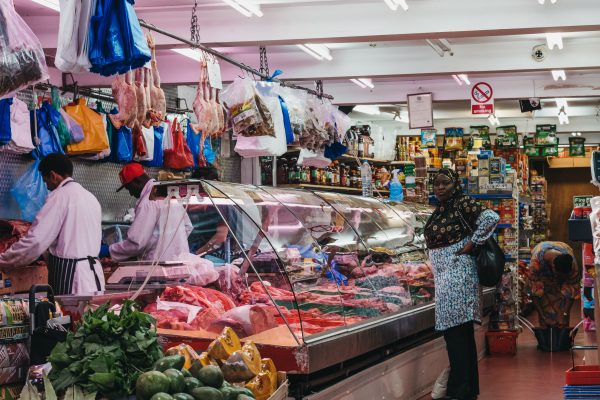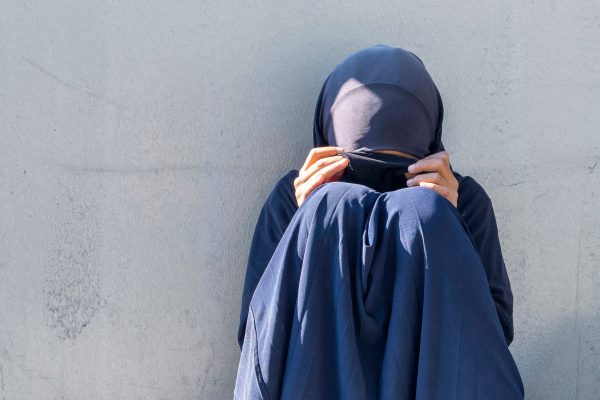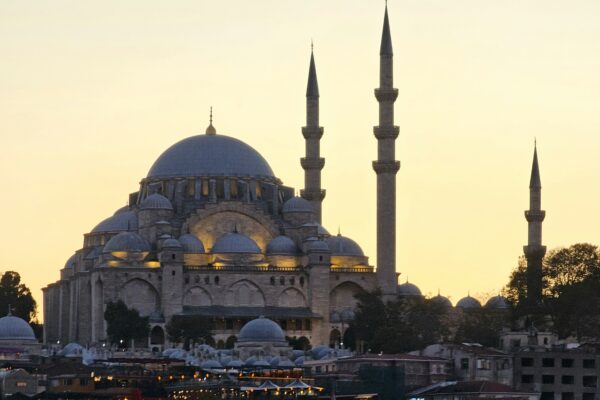With the electoral victory of 2019, the extreme right-wing BJP and its ideological mentor RSS have firmed up their hold on India. With fear running deep among minorities of the country for a long time, fear became hopelessness which paved the way for numbness followed by anger that can be seen in all parts of India.
With the electoral victory of 2019, the extreme right-wing BJP and its ideological mentor RSS have firmed up their hold on India. With fear running deep among minorities of the country for a long time, fear became hopelessness which paved the way for numbness followed by anger that can be seen in all parts of India.
On December 11th a bill known as the Citizenship Amendment Bill (CAB) was passed in both the lower and upper houses of the Parliament in India. The passing of the bill has pushed Indian citizens to the streets, and the protests have been ongoing for the past one month, and as of now, according to reliable media houses at least 30 have been killed and 10,000 have been detained by police all across the country.
Prominent personalities from academic, artistic, public, political, social and cultural spheres in India have found themselves detained by police or faced a loss of employment because they supported the protests against the two recently amended laws – the one related to the Census Act (1948) called National Register for Citizens (NRC) and the other which comes under the Citizenship Act (1955) called CAB (Citizenship Amendment Bill), now a law known as Citizen Amendment Act (CAA).
Background
In May 2014, the election results gave a clear mandate for the right-wing party called the Bharatiya Janata Party (BJP) with 250 seats in the 545 seat Lok Sabha (lower house of the parliament). The Lok Sabha, which roughly translates into people’s assembly, is more powerful than the upper house in the Indian Parliamentary system of governance. With its allies, the BJP managed to win near 300 seats.
In this context, the BJP’s Narendra Modi became Prime Minister. The poll campaign of the BJP gave more emphasis on alleviating the economic grievances of the people of India – but the promises made had no logical narrative and was more rhetoric. It included giving 150,000 rupees to each Indian citizen’s bank account after coming to power and as usual, when they won, they forgot their promises. But, reeling under the economic woes, the common man of India believed this absurdity.
The theatrics of the ruling party resonated well with the common populace as many schemes were launched with great vigor for the first two years. Then on November 8th, 2016, Narendra Modi rendered the 86% of currency in circulation valueless in one stroke. This currency pertained to 500 and 1000 rupee notes. The PM promised to clean the economic system of black money and counterfeit notes along with countering terrorism with this move. The local populace and some academic pundits jeered at this move.
Skepticism of the move was evident from the start as Amartya Sen – the Nobel laureate in economics from India – criticized the move of being a theatric scene rather than something planned with rational intent. He along with the former PM of India, Dr. Manmohan Singh (Ph.D. in Economics), predicted an economic slowdown because of this precarious move. As time went by, it became evident that the farmers, Micro, Small, Medium Enterprises (MSME) along with other poor citizens who make up most of the Indian populace are suffering because of this move as many of their daily financial needs were met with daily wages.
With a 40% illiteracy rate and nearly 80% English illiteracy, the majority of the country does not have bank accounts, which prompted them in saving their hard-earned money in higher denominations of currency which was 500 and 1000 rupee notes in their homes. As the common man struggled to survive, a total of 120 people died due to dire economic conditions produced as a result of this move.
Two months after demonetization, the government came out with a new type of tax regime called Goods and Services Tax (GST). This tax regime is reminiscent of developed countries but for a country like India where 85-90% transactions are done via liquid money without a computer-generated system, this ringed another alarm bell for the economy. The MSME made up to 80% of Indian economic activity and the GST resulted in the collapse of it. The problem was not the GST but its implementation without taking enough adaptive measures to make the Indian economy prepared for a new tax regime.
Instead of taking responsibility for the loss to the economy and the suffering caused by these two blunders, the central government and their followers started parading the people who criticized demonetization and GST as ‘anti-nationals’. By this time, the government managed to buy the mainstream media houses in India and started to propagate their narrative. This narrative included the ‘Us vs Them’ binary.
The ‘Us’ included the ruling party and their followers while ‘Them’ included religious and caste minorities along with intellectuals who criticized the government. With an alarming pace, the narrative took the shape of a hard right-wing ideology called Hindutva. The ruling class started batting for this concept which includes Hindu-Aryan supremacy, and India as the homeland of people who believe in one religion called Hinduism, who speaks one language called Hindi. This narrative was the backbone of an organization called Rashtriya Swayamsevak Sangh (RSS) which was behind Mahatma Gandhi’s assassination.
In 2019, worsened economic conditions caused disenchantment with the general populace of India. There was hope among the minorities in India that the ruling class won’t get away with the mismanagement of the economy. Many political analysts and opposition parties hoped to cash in on this disenchantment. As a result, the 2019 electoral victory of the BJP was a major shock for them.
Many aspects can be considered for the BJP’s victory in 2019. To start with, the BJP is a party that gained traction after the Babri Masjid Demolition in 1992, the aftermaths of which saw thousands of deaths, the majority of them Muslims. The elections held after 1992 saw the BJP winning approximately 50 seats (a considerable increase from the single-digit it held in the previous election). The term right-wing extremism bodes well with the BJP, as it has seen a meteoric rise in electoral dividends after various communal riots across India. The victims in most cases would be Muslims, Christians, or lower caste people known as Dalits.
This tactic was used by the BJP in 2019 and saw it working very well. The terrorist attack that happened in Pulwama was used by the BJP as a political tool. They turned this attack into the India-Pakistan narrative in which a Hindu-Muslim communal divide was inconspicuous. After some days, Indian mainstream media boasted of Indian retaliation. They were speaking about Indian air force attempting a pre-emptive strike in Balakot, Pakistan. This action set a befitting scene for the India-Pakistan narrative.
In this narrative, the ruling party made themselves the saviors of India and Pakistan, the enemy. They started tempting voters to vote for them by heralding themselves as the symbol of extreme patriotism and nationalism. This gave the BJP a cutting edge of type-casting the opposition and the intellects who questioned the credibility behind the airstrikes and the timing of the terrorist attack in Kashmir as ‘anti-nationals’ who are batting for Pakistan.
This ‘Us vs Them’ binary once again found traction among the general populace which prompted them to forget their economic, political, and social hardships to once again fall prey to the communalistic agenda. Only, this time, it was advertised with the covering of muscular nationalism with the flavor of jingoism. The survey conducted by the Centre for Study of Developing Societies (CSDS) and The Hindu Daily found a clear swing towards the ruling dispensation after the event.
Indian elections are an expensive affair. According to The Hindu Daily, the Indian Lok Sabha elections in 2019 was the most expensive of them all. On the global level, the quantity of money that flowed in the 2019 Indian elections was unprecedented.
With immense money, muscle power, and a Hindutva cadre base along with the jingoistic narrative, the BJP and its allies won bigger than 2014 with 353 seats in the 545 seat parliament. The rejuvenated RSS-BJP along with their Hindutva allies pushed their agenda with more vigor than before. The recent events are a result of this aggression.
What are the NRC and CAA?
The NRC calls for the establishment of a national register for those living in the country of India in an attempt to sort out “real citizens” from illegal immigrants. The CAA seeks to give citizenship to people from communities of Hindu, Buddhist, Sikh, Parsi, Jain, and Christians who face persecution from the neighboring countries of Pakistan, Bangladesh, and Afganistan.
At first glance, one may find the exercise to be humanitarian aid and a logical practice to have important national data. But here is the catch: Tamilians from Sri Lanka (about 300,000 of them are living in the state of Tamilnadu), Rohingyas from Myanmar (which UN has recently described as the most persecuted community in the world), Ahmadiyyas in Pakistan or Christians from Bhutan are all excluded.
Additionally, the NRC fails to give a clear cut definition of what sort of documentation is needed to prove citizenship (which our government has been changing from time to time). Previously, the Citizenship Act had the clause of giving Indian citizenship to people who migrated to India on or before March 25th, 1971. The Amendment made in the act, changed this date to December 2014.
The exclusion of refugees based on communal lines is clear and the intent behind excluding particular communities who are in grave need of citizenship has been rejected by the protesters. The Indian Constitution has an introductory note called the Preamble which beckons the country to be Sovereign, Socialist, Secular, and Democratic. Both the CAA and the NRC that are going to be implemented countrywide goes in utter contrast with the secular character of the constitution.
Besides the preamble, Article 14 of the Constitution goes to great pains to explain the right to equality of the Indian people before the law, and Article 15 explains in great detail about the right to religion. The separation of migrants on communal lines defeats the basic foundation of Articles 14 and 15 of the Constitution. The NRC exercise has been implemented in the state of Assam with a total cost of 12.24 billion rupees with the whole procedure – with 1,900,000 of the total 3 billion finding themselves stateless.
The politicians of Assam’s ruling class first cheered for the process but the results disappointed them which made the state government dismiss the results of the process and to go for an overhaul. So basically, the whole process is now redundant with the 12.24 billion rupees thrown into a dust bin.
The Indian economy has been reeling under severe distress ever since the demonetization that the government launched on November 8th, 2016. Thanks to demonetization and mismanagement of the economy, the fastest growing economy has ceased to grow. The recent IMF and World Bank data forecasts a grim picture of the Indian economy and the irony is that the IMF lauded the demonetization process when it was launched.
As Hindutva’s push happens in one part, the other part tells the story of the Indian economy hitting rock bottom. Automobile sales have dipped to a record low. The unemployment rate is at a 45-year high, partly owing to employees being dismissed from the automobile sector. Household consumer spending has plummeted. Real estate business has taken a major hit. The fastest-growing economy with 9% GDP growth, carried on the shoulders of the common Indian, is now seeing the demonetization and ill implemented GST destroying MSME and agriculture. The events in other sectors are showing just as bad news.
Economists define the situation in India as ‘stagflation’, which is characterized by decreased earnings and increased prices for necessary commodities while predicting an unprecedented economic crisis. The National Institution for Transforming India (NITI Aayog), an autonomous body that oversees economic activity in India, calculates the present Indian GDP growth to be 4.5%. Economists and previous Government employees like Harsh Mander writing for The Hindu Daily argue that the present GDP calculation is an exaggerated and flawed system that was introduced by the present Government and the actual GDP growth by the old calculation criteria is only 1.1 %.
When the citizens themselves are finding it hard to live in their own country, how would money spent on a practice like the NRC for the whole country end up? Who will provide for the livelihood of the people living in the country and the migrants coming from other countries?
The hidden agenda
The Home Minister of India, Amit Shah, in a speech before he became the Home Minister in 2019 says that the NRC is to be implemented after the CAA and that all immigrants except Hindus, Buddhists, and Sikhs will be thrown to the sea. He was the same person who introduced the CAA in Parliament and the mastermind behind the NRC exercise in Assam. He has also said that the NRC will be implemented in the whole country. So why is it that besides these three communities – the Christians, Parsis, and Jains – those mentioned above were included in the CAA list?
According to the present ruling party, the BJP’s ideological head RSS (whose worker Godse being revered to as ‘patriot’ by his followers, was behind Mahatma Gandhi’s death), their enemies are Muslims, Christians, and Communists. This is clearly stated in one of the RSS ideology guru V.D Savarkar’s essays. Recently, the ruling dispensation had run a campaign to give V D Savarkar, the Bharat Ratna, the country’s highest civilian honor. So, it is no secret what the real intentions are behind the NRC and the CAA.
So the question lingers why Christians are included in the list of CAA? The country of India has been a fertile ground for mob lynchings which has seen an exponential spike from 2014 after the current ruling dispensation took over the reins. Among them, Muslims and Dalits (lower caste) found themselves to be the victims. The data shows that Christians were also at the receiving end in some cases while all cases had the culprits following an extreme right-wing ideology of Hindutva.
So, the only credible explanation is that fearing international condemnation, Christians were included in the list while Muslims, as Islamophobia is paying rich dividends for electoral gains for right-wing parties in parts of Europe and the U.S., remains an easy target.
The National Population Register (NPR) is an exercise that is done in India every 10 years to take an exact account of its population. The NPR is the responsibility of the state governments across India. The state governments under political parties other than the BJP found new sections in the register which was not present in the previous editions of the NPR. As a result, the intellectuals among them found it to be the BJP Central Government’s plan to use the NPR as a preceding piece for the NRC. This prompted them to stop the exercise, while the BJP-ruled states of India have started the NPR exercise.
The Hindu Daily reports that the detention centers that were built in Assam for the NRC exercise were made for 5,000 million rupees. The Wire Daily reports 10-20 deaths that had happened in the detention centers of Assam where the NRC was held previously. This might take the total death toll related to the CAA and the NRC to more than 30. The conditions in the detention centers were reported to be unhygienic and horrifying. Similar detention centers were reported to be coming up in many states across India.
However, after finding out the larger conspiracy of the BJP government, many states not under control from the BJP government have stopped the activities relating to detention centers. The BJP-ruled states, however, continue to build them. What will happen to people who are sent to detention centers after the Central Government gives the tag of ‘illegal immigrants’ or ‘infiltrators’ to them can be found in the history of Nazi Germany as the ruling dispensation’s another ideologue M. S. Golwalker has called on his followers to learn from Nazi Germany in his essays.
With the electoral victory of 2019, the extreme right-wing BJP and its ideological mentor RSS have firmed up their hold on India. With fear running deep among minorities of the country for a long time, fear became hopelessness which paved the way for numbness followed by anger that can be seen in all parts of India. Whether the electoral victory was a reliable phenomenon is doubtful while for now – India is burning and the writer of this article does not know whether he or she will be alive to write another article after this.
As we minorities of this country are fighting for our rights when hopes get dashed by the Majoritarian Agenda reminiscent of Hitler and his Nazi regime as they went on a rampage of ethnic cleansing, we, the Indian minorities, have nothing but words of our Father of the Nation on our lips:
‘Do or Die’ — Mahatma Gandhi (1942, Quit India Movement).





